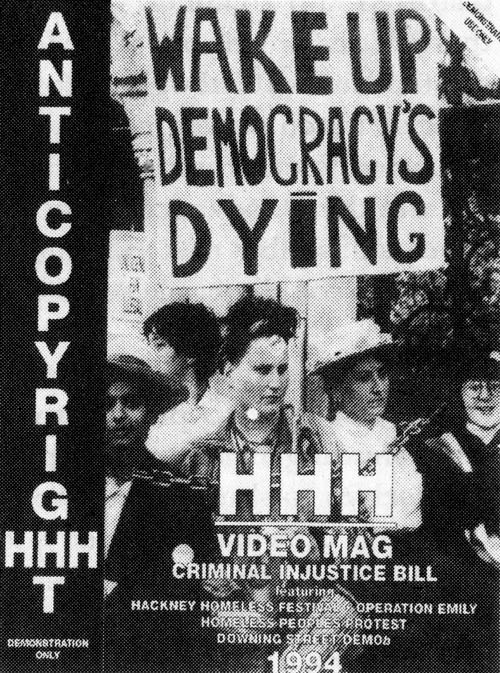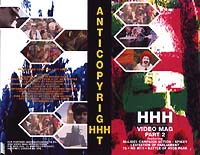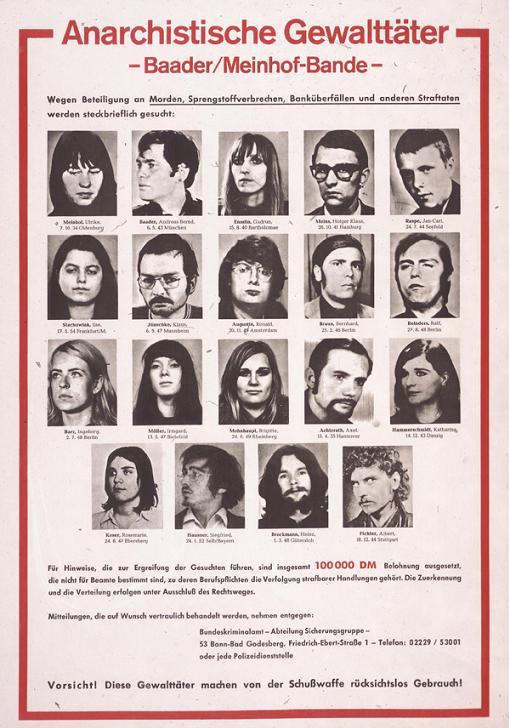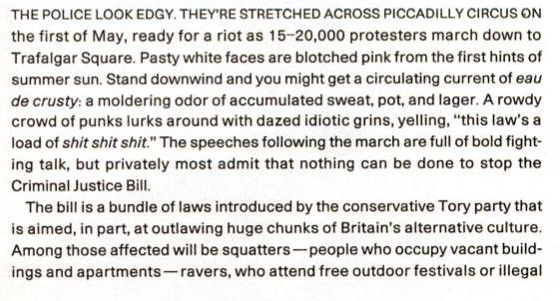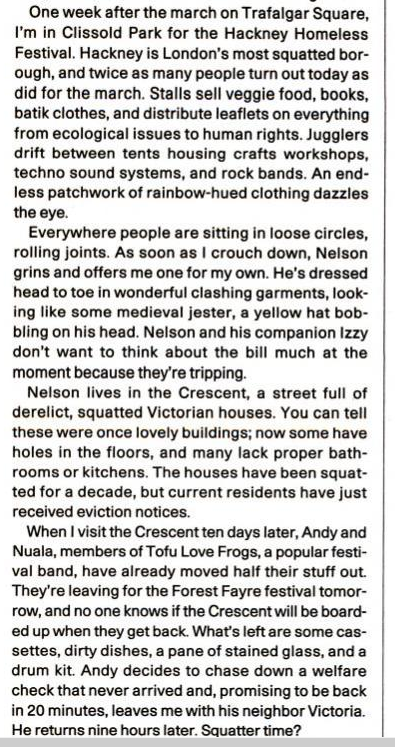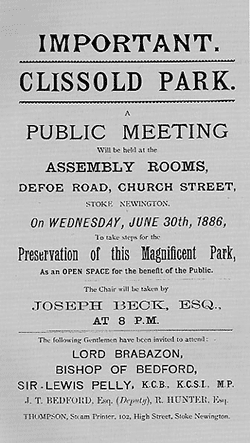
NB: This updated programme was published on the first day of the festival – Friday 24 May, so events on that day are not included.

All Week
Squat Cafe • Cheap vegan food • Every evening 18.00-23.00 • Note the cafe provides food only and not accommodation
“Mistakes” art exhibition • Barnabas Hall • Mon-Thurs afternoon & evening (not Wednesday evening)
The Wormfarts of Art open exhibition • Bring your own stuff as well • The Factory Squat • Daily 17.00-21.00
Saturday 25 May
14.00 • Anti-Fascist 5-a-side Football Tournament • Teams indude: Legal Defence & Monitoring Group, Class War, Rugger Bugger FC., The Nation’s Vibration, Hackney Patients’ Council, the Albion, Squall, Active Badminton Crew, the Co-ordinators + teams from Bradford, Brighton & Bristol + many more • Sign your own team up on the day • Bring balls! • Clissold Park • free
16.45 • Facilitating Meetings • workshop • Squat Cafe • free
18.00 • Defending demonstrators • workshop • Legal Defence and Monitoring Group • Squat Cafe • free •
20.00-02.00 • Dub Soundsystem • The Nation’s Vibration • The Factory Squat • £donations
Sunday 26 May
16.15-20.15 • Films at the Rio • 16.15 Themroc (dir. Claude Faraldo) + 18.20 Un Chien Andalou (dir. Luis Buinuel) 8.40 Ghosts of the Civil Dead (dir. John Hilcoat) • ABC prisoner support group stall • Rio £4.50/3.50
19.30 • Visions of Poesy • Riff Raff Poets • Hackney launch of this anarchist poetry bock with readings from contributors • The Acton Arms • £2
20.00 • Exploding Cinema *A visual feast – no budget and low budget shorts, films, videos and live performance • The Factory Squat • £3
Monday 27 May
All day
• Three P Pirate Radio • 102-106 FM • straight out of the ghetto with kicking music, deliberate fun and hard-hitting politics
The WormFarts of Art exhibition opens • see All Week
13.00-18.00 • Small Press (Book) Fair • Books, comics, zines, records, Tshirts, underground’s finest • Expect to see AK Distribution, Active Distribution, A Distribution, Black Flag, Slab-O-Concrete, Bypass, ACE, McLibel, Squall, Freedom, Survivors, Between the Lines, ASS, Hackney green groups and many more … • Barnabas Hall • free
19.30 • Anti-Election Alliance Meeting • Class War and the Anarchist Communist Federation (ACF) • Barnabas Hall • free
Tuesday 28 May
11.00 • Perspectives of Anarchism • workshop • Barnabas Hall • free
12.30 • Picket of McDonalds • Meet outside McDonalds, Narrow Way, Mare Street, Hackney E8 • (BR and buses: as Samuel Pepys)
14.30 • McDonalds under the Grill: lessons for fighting multinationals • McLibel Support Campaign • The essential tool kit for taking on greedy corporations with live demonstration by McSpotlight (http://ww.mcspotlight.org/) • Barnabas Hall • free
16.30 • The Unabomber Manifesto – Key Ideas • discussion • Barnabas Hall • free
19.30 • Survivors Poetry & acoustic music night • Survivors Poets • Readings & performance by survivors of the mental “health” system with Billy Childish, Dave Russell, Ray Wilmot, Fiona Branson • Barnabas Hall • £2.50
19.30 • Sexual Freedom • workshop + cafe + risuals • From free lore to the Spanner trial, with especially sexy steamy food at the cafe • Squat Cafe • free
20.00 • Acoustic night • The Astronauts, The 1926 Committee, the Dole Claimers, Dr Feelshite • The Acton Arms • £2

Wednesday 29 May
14.30 • Training day for autonomous communities in space • Association of Autonomous Astronauts • Barnabas Hall • free
19.30 • Politics and Inner Change • Discussion • Unity Club, upstairs meeting room • free
20.00-24.00 • A Night of Extraordinary Acts • Comedy night compered by Tony Allen • With Mark Kelly, Mr Social Control, Col. Fitz, Steve Ignorant, Rory Motion, Julia Palmer, Jenny Moseley + more • Chat’s Palace • £2. 50/4.00
20.30 • late addition • Grunge, punk, reggae: Penalised, Brassic Park, possibly NothingFace, possibly P.A.I.N and other bands (subject to alteration) • Acton Arms • £1.00 21.00 •
Uncle Bob’s Special Film Night • Noam Chornsky’s Manufacturing Consent + Cable Street footage (60th anniversary) + more • Technobabble • free
Thursday 30 May
7.30 • Reclaim The Streets action Stop the Commuter-Polluters • meet outside Chat’s Palace • People on bicycles needed
15.00 • Anarchism & Mental Health • talkshop • Barnabas Hall • free
18.00-19.00 (maybe longer) • Organising in the Education Industry: Discussion for students and workers, what to do in terms of organisation and resistance. Barnabas Hall • free
18.45-23.00 • Ken Loach double bill • 18.45 Riff Raff + 20.30 discussion with Ken Loach + 21.15 Land & Freedom • Rio Cinema • £4.50/3.50
19.30 • Anarchism, Islamic Fundamentalism & the Kurdish Struggle discussion • 5th of May Group (Turkish/Kurdish anarchist group)• Barnabas Hall • free
20.00-23.00 • Out-take charity event • Academy 23, the Apostles, John Antiss (queer poet), Sam & Mono band (anarchistic cabaret) • Out-take – Gay & Lesbian Survivors of the mental “health” system • Chat’s Palace • £5/:.3)
Friday 31 May
17.45 • Critical Mass • Regular monthly action • Cyding mayhem in central London, meet on South Bank below Waterloo Bridge • Followed by films at Squat Cafe (see below)
20.00-01.00 • Stricknien D.C., Terminal Heads, Substandard, The Restarts, Walking Abortions • Reknaw • Venue t.b.c., look out for posters • £3
20.45ish • Critical Mass film night • Screening of Return of the Scorcher, film from California that gave Critical Mass its name • Starts after the regular London Critical Mass • Squat Cafe • free
21.00 • Farrago Poetry Slam Poets vs. Rant Poets • Farrago Poets, MC John Paul O’Neill • Current Farrago London slam champions – Mark Rathmell, Annie Byfield, Brian Lynch – against the Rant Poets – Steve Tasane, Gabby Tyrrell, Vic Lambrusco, Annie Rouse • Squat Cafe • suggested donation 12
20.00 • Bad Attitude magazine party/benefit • Women only, mesas guests • The Factory Squat • t.b.c STOP PRESS: Now on Sat 1 June
Saturday 1 June
12.00-14.00 • Critical Mass 2: This time it’s Hackney • Cycle ride through Hackney from London Fields to Clissold Park (and the Punx Picnic) • By Pub on the Park, London Fields • free
14.00 • Punx Picnic • Reknaw • Possibly with the Tofu Love Frogs • Post-picnic gig at the Albion • Clissold Park • free
17.00 (after Punx Picnic) • Aus-rotten (USA), Oi Polloi, Special Duties, The Nerves, MDM, Coitus, Red Flag 77, English Dogs, The Varukas • Reknaw • Venue to be announced at the picnic • £4
20.00 • Bad Attitude. see Friday 31 May
LATE • United Sound Systems party • Phone for venue details on the night 0181-959-7525 £donations
Sunday 2 June
15.30-19.00 • Mad Hat Tea Party • Requirements for attendance: bring a hat • Bands – Dead Dog Hat, Ming Hat, Dole Hat • Springfield Park, outside cafe • free
19.00-22.30 • HHH Video Evening • HHH cooperative • Screening of first edit of the “official” Hackney Anarchy Week film made by HHH throughout the week + HHH films “It’s a bit rough, ain’t it?”, Spikey, ARCH, 75A, demolitions etc. • Samuel Pepys upstairs
Organising groups
5th of May Group • PO Box 16881, London 118 7L
ABC-Anarchist Black Cross • c/o 121 Bookshop, 121 Railton Road London SE24
Anarchist Communist Federation • c/o Freedom Press (address below)
Association of Autonomous Astronauts • BM Box 3641, London WCIN 3XX
Bad Attitude • c/o 121 Bookshop (address above)
Class War • BM Box 357, London WC1N 3XX
Critical Mass • just turn up
Exploding Cinema • 0956-823712
Farrago Poets • 106 High Street, West Wickham, Kent BR4
HHH • email: HHH@phreakintermedia.co.uk
Riff Raff Poets • c/o Freedom Press, 84b Whitechapel High Street London E1 7QX
McLibel Support Campaign • 0171-713-1269
McSpotlight • http://www.mcspotlight.org/ & email: info@mcspodight.org
Nation’s Vibration • 0171-639-8702
Out-Take • Derek 0171-613-5326
Reclaim The Streets • 0171-281-4621
Spare Change Press • Box26,136-138 Kingsland High Street, London E8
Survivors Poets • 0171-916-5317
United Sound Systems • 0181-959-7525
Bust Info
Look out for the Legal Defence and Monitoring Group bust cards and carry them at all times.
These are their recommended solicitors:
Moss & Co. • 0181-986-8336, Pager 01459-103582
MacCormacks • 0171-790-4339
Thanks to Hackney Squatters Collective, 75A, 67A, the Factory, Chat’s Palace, Charles @ the Rio, Rick, pHreak, Tao Links, Calverts, Giles and all the groups & individuals who organised events this week. See you next year!
Venues
Free maps from the council, try Hackney Town Hall
Acton Arms • 296 Kingsland Rd (corner Arbutus St), Haggerston E8, 0171-254-7056 • Bus 22A, 22B, 67,149, 243, 243A, N243 • Access: ground floor
The Albion • please note the Albion is now being boycotted
Barnabas Hall • 109 Homerton High Street, Homerton E9 • BR: Homerton, Bus 228, 236, 276, 52, W15 past the door; 221., 30, 38, 55, 106, 253, N38, N253 nearby • Access: ground floor
Chat’s Palace • Brooksby Walk, Homerton E9 • Buses and BR: see Barnabas Hall • Access: good
Clissold Park • Stoke Newington Church Street/Green Lanes N16 • Bus 73, 106, 141, 171.
The Factory Squat • 8 Shelford Place Industrial Estate, Stoke Newington Church Street N16 • Bus 73, 141, 171 Tube Arsenal • Access: ground floor
London Fields • Pub on the Park, Martello St E8 • on your bike
Rio Cinema • 103 Kingsland High Street, Dalston E8, 0171-254-6677 • BR: Dalston Kingsland, Bus: 67,76 (not Sun),149, 236, 243, 243A, 8243 past the door; 221., 228, 30, 38, 56, 277, 38 nearby • Access: good
Squat Cafe • 67A Stoke Newington Road (entrance on Princess May Road) 816 • BR: Dalston Kingsland, Bus: 67,76 (not Sun),I49, 236, 243, 243A, 8243 past the door, 236 goes near • Access: lots of steps
Samuel Pepys • Mare Street, Hackney E8 (next to Hackney Empire), 0181-533-7709 • BR: Hackney Central, Hackney Downs, Bus 221., 228, 38, 48, 55,106, 236, 253, 277, D6, N26, H253 past the door, 30, 56 nearby • Access: poor, up stairs
Springfield Park • Spring Hill ES, near Clapton Common. Bus: 253 outside, 106 nearby
Technobabble • 40 Underwood Street, Hoxton NI • Tube: Old Street, Bus: 43, 76, 141, 214, 271 nearest, 55, 243, N243 nearby • Access: poor, up stairs
Unity Club • 96 Dalston Lane, Dalston E8 0171-241-0923 • BR: Dalston Kingsland, Bus: 22k 30, 38, 56, 236, 277 • Access: poor, upstairs
Food
all cheap with vegan & vegetarian
Squat Cafe • cheap vegan food every evening 18.00-23.00
Pumpkins • 76 Clarence Road E5, 0181-533-1214 • 12pm-21.30pm •veg & vegan
Cafe Alba • 183 Mare Street E8, 0181-985-8349 • Mon-Fri 12.00-15.00 & 18.00-23.00, Sat & Sun 12.00-23.00
Centerprise • 136 Kingsland High Street E8, 0171-254-9632 • 10.30-17.00
Info updates during the week
Posters at events • Squat Cafe noticeboard • http://www.pHreak.co.uk/anarchy/ • pHreak bulletin board • email: anarchy@phreak.intermedia.co.uk • HAW @ BM Active, London WC IN 3XX

Message From The Organisers
So it’s finally happening, but what is it and why? First, it is whatever you “the people” make of it, if riots and insurrection ensue during or following the week you can bet we’ll be blamed or celebrated, depending on the bias. All that the co-ordinators have done is in fact what you see on these pages of the programme. We asked those who call themselves Anarchist or Anarcho-something to do their thing during this week. Hackney Anarchy Week is therefore just a concentrated reflection .of what the Anarchists of Hackney and London are, however weak, disorganised, diverse or dynamic that is. For those who are unfamiliar with Anarchist politics it may seem confusing but take heart that there are people who believe in changing things away from the tired hypocrisy of government and trendy left (and right) wing revolutionaries who can’t see past their paper sales!
We did not aim to provide a Hackney Anarcho-Butlins Holiday camp. The festival has come through a Do It Yourself structure and we see it as an ongoing path for the week and the eventual revolution itself. Hackney Anarchy Week did not ask the council for anything, and in fact all they have done is attack us, and we do not expect to be asked of anything ourselves. We want to inspire. to bring together, to celebrate and to advertise, not to patronise, regulate or act as benevolent guardians of revolutionary anger. We’ve done something, it won’t end here, what about next year’?
Dedicated to Albert Meltzer, Emma Cray and Joshua Compston for lives of dedication and enthusiasm.
The Bread and Circuses Roadshow
Are you fed up with an unsatisfying, meaningless existence’? Would you like to do something about it’? Fancy researching Ozone-hole depletion in Antarctica’? Or maybe doing that bit of metal- sculpture that you always wanted to’? Or maybe trading in your polluting car for an environmentally-friendly pony and trap’? Wanna get a band together’? Or just get a break from the consumerist treadmill for a few years?
Well, tough shit. You can’t and there’s nothing you can do about it, because that’s the way it is. Yes, welcome to the BastardWorld (TM) Bread and Circuses roadshow. Here’s the low-down… what would you really like to do with your life instead of the dead-end treadmill existence you’ve been allocated’?
Yes, that’s right, just fill in the triplicate form enclosed and return it to the Department of Social Control. Then, after it’s been bent, folded, mutilated and stapled, lost, found, lost again and then put at the bottom of the pile enough times, we’ll arrange for you to see a group of our own hand-picked professionals doing exactly what you’ve always wanted to do but aren’t allowed to. Remember, all the interesting jobs are reserved. If we allowed the likes of you to get a look in, there wouldn’t be any plum jobs to hand out to the privileged members of society, their offspring and their minions.
Musn’t grumble, otherwise we’ll stitch you up as a social deviant and send you off for rehabilitation therapy and find a dozen good reasons why you shouldn’t get a look in. So remember, get into vicarious living, because that’s all you’re gonna get. Don’t get any funny ideas about voting in a different government to change things at the next election, because it won’t make a jot of difference. Why? Easy, because all the political parties are just another aspect of tile Department of Social Control’s very own “Bread and Circuses” roadshow. We’ve had it all sewn up long before you were even born and were not about to change anything for some little git like you. Sure, everything’s bullshit and we don’t care because, we don’t give a toss. Get used to it. We control everything and that includes you.
Don’t like it’? Well, there’s nowhere to go, buddy. So you can either put up and shut up or check out.
Albert Meltzer
A life time of Anarchist struggle ended this month with his death. A public procession to his memorial service is planned for 10am Friday, 24. March from Celestial Gardens, off Lee High Road, Lewisham, SE 13. Bring Black Flags, respect, but no Golden Angels.
There follows an excerpt from his recently published auto-biography Couldn’t Paint Golden Angels, Sixty Years of Commonplace Life and Anarchist Agitation:
“Personally I want to die in dignity, but my passing celebrated with jollity. I’ve told my executors that I want a stand-up comedian in the pulpit telling amusing anecdotes, and the coffin to slide into the incinerator to the sound of Marlene Dietrich. If the booze-up can begin right away, so much the better, and with a bit of luck the crematorium will never be gloomy again. Anyone mourning should be denounced as a representative of a credit-card company and thrown out on their ear. Snowballs if in season (tomatoes if not) can be thrown at anyone uttering even worthy cliches like “the struggle goes on” and should any one of a religious mind offer pieces of abstract consolation they should be prepared to dodge pieces of’ concrete confrontation.”
Reclaim the Streets…
…is an autonomous group who take direct action against ‘car culture’. Hackney has the lowest proportion of car ownership in London, yet every morning and evening commuters bring their pollution through Hackney on their way to the City. Stop the Commuter- Polluters and join the RTS action. Thurs, 30 May. Meet outside Chat’s Palace at 7.30 am.
